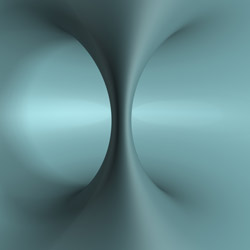The problems with pure maths
Geometry is all about the shape and the properties of mathematical objects, while topology is mainly concerned with the properties that remain unchanged after the continuous deformation of such objects. The notion of a manifold captures the idea of a curved space that simply looks flat in small local regions. These regions or sub-manifolds are geometric devices for analysing manifolds called foliations or leaves. The EU-funded research project 'Integral formulae and extrinsic geometry of foliations' (Extgeomfol) studied the geometric properties of the foliations of such objects and their relationships with topology. It investigated these properties in depth using geometric analysis methods, topological theories and computer simulations. The main results were the development of three novel research tools: extrinsic geometric flow (EGF), integral formulae (IF) and variation formulae (VF) as well as their applications to solving mathematical problems on foliations. The IF are useful for solving complex geometric problems concerning suitable objects. This includes defining their higher mean curvatures and minimising their volume and energy as defined for their vector or plane fields. However, the important result is EGF, which is a tool for defining the geometric properties of certain objects. To use this it is necessary to use the VF, which represent a change in the different geometric quantities of these objects under set conditions. In the past, applications for pure mathematical problems have included sending information securely using encryption techniques and other means of 'coding' and 'decoding' for checking and correcting errors in signal processing and data transmissions. The project's technical achievements open the way to generating new knowledge in subjects relevant to the field of pure mathematics.



